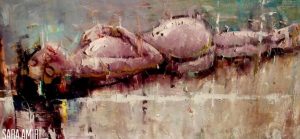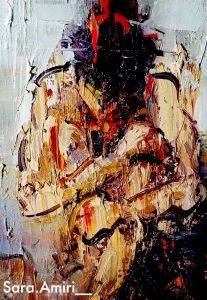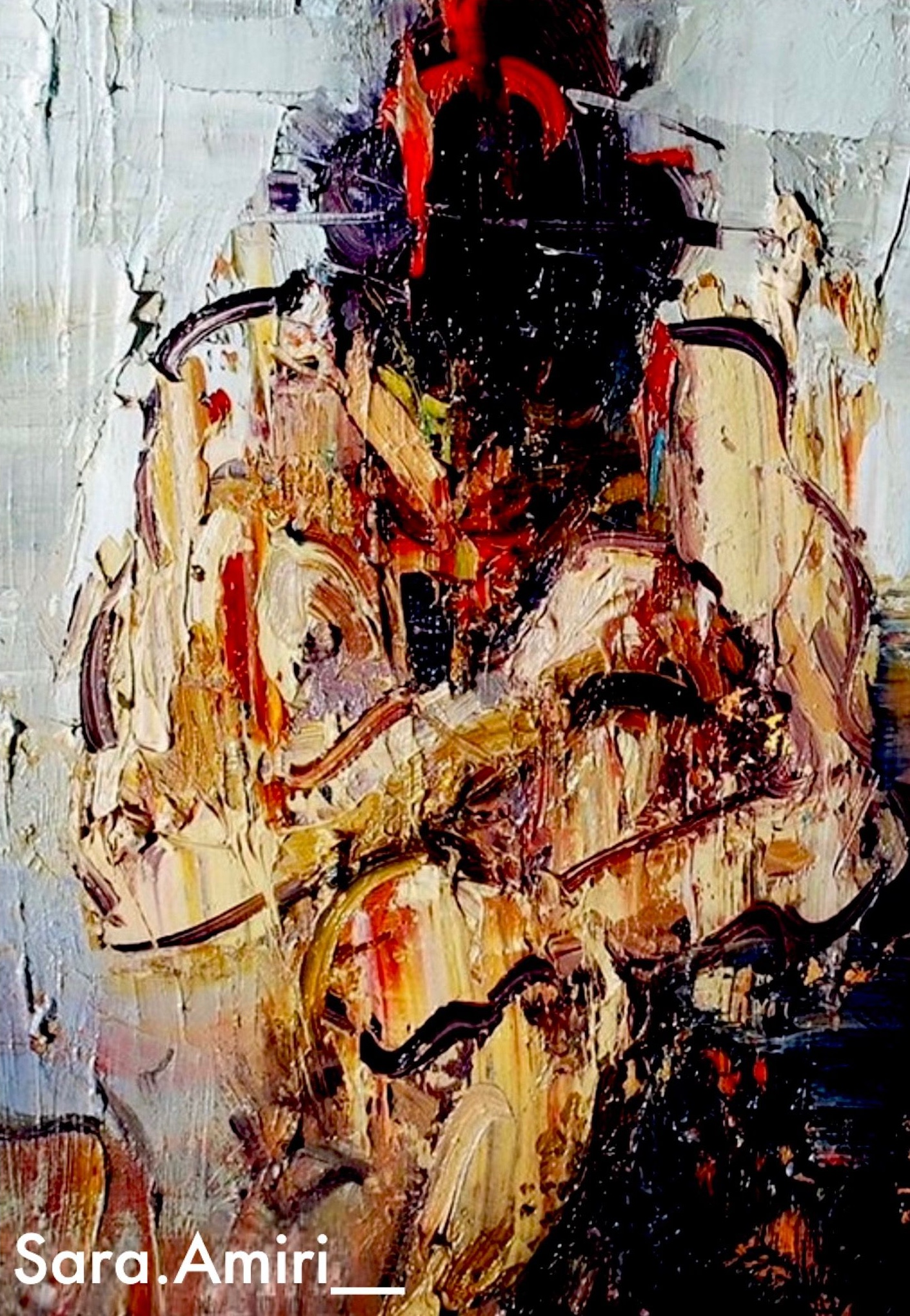In a world where the voices of many women are still silenced, femicide is not merely a personal tragedy—it is a social and global catastrophe. It stems from possessive beliefs, structural violence, and a long history of injustice against women. In many societies, the murder of women is not only a horrific event but a symbol of the denial of their right to life, dignity, and autonomy. These harsh truths often appear in statistics, news headlines, and painful everyday stories—but within art, they become enduring and powerful screams for justice.
Sara Amiri is an artist who transforms the canvas into a space of protest, empathy, and awareness. Her works are not only reflections of women’s suffering but invitations to see, to listen, and to act. Her paintings become the voices of those women who are no longer here, yet whose presence lives on through each brushstroke.
In her first piece, “End the Killing of Women,” we are confronted with a female face—half swallowed by shadow, half illuminated—as if suspended between life and death. The harsh and sorrowful lines evoke the silent cries of women who have fallen victim to rage, prejudice, or possessiveness. The presence of red, symbolic of blood and warning, shakes the viewer out of indifference.
The second piece, “Women Do Not Belong to Anyone,” uses visual symbolism to portray a woman’s body like the earth—borderless and not to be possessed. In this painting, chains are breaking apart, and the woman’s eyes boldly meet the gaze of the viewer—not in plea, but in reminder. It is a direct challenge to objectifying and possessive views of women, and a celebration of autonomy and the right to choose.
With intense visual elements, expressive colors, and a deep psychological lens, Sara Amiri’s work becomes a mirror of both pain and resistance. Each painting tells the story of a woman who could have lived—but whose life was taken. And in this lies the essence of her artistic and social responsibility.
She is not only a painter—she is the voice of silenced women. Her art is an invitation to see beyond beauty; it is a call to stand against violence, in the name of art, in the name of women, in the name of humanity.



